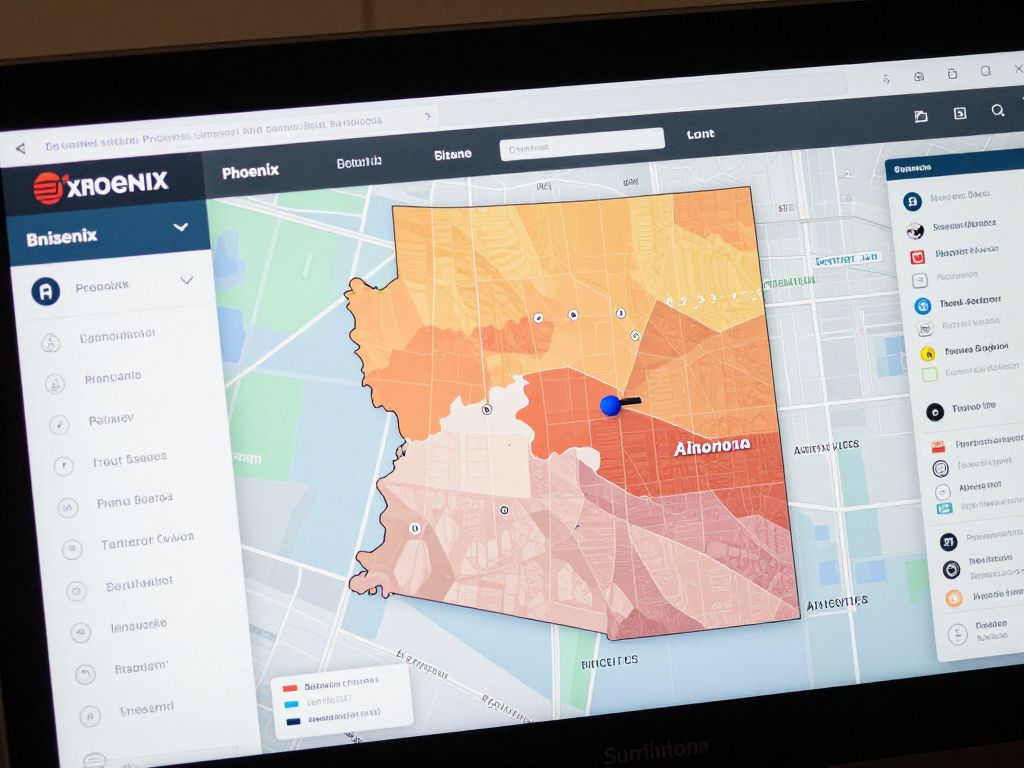5 Essential Strategies for Achieving a Lush Lawn in Phoenix’s Hot Climate
Maintaining a healthy, vibrant lawn in Phoenix’s intense heat involves deliberate planning and disciplined execution. The high temperatures, relentless sunlight, and arid conditions make achieving and sustaining a lush lawn particularly challenging. Success depends on understanding the environment and implementing targeted strategies. Here, we explore five crucial approaches to grow and maintain a resilient, lush lawn in Phoenix’s demanding climate.
1. Select Heat and Drought-Tolerant Grass Varieties
The foundation of any successful lawn in Phoenix starts with choosing appropriate grass types. Native and adaptable warm-season grasses are best suited for the region’s conditions. These grasses are inherently more resistant to high temperatures and water scarcity. The key options include:
- Bermudagrass: Known for its vigorous growth and durability, Bermudagrass performs exceptionally well in full sun and well-drained soils. It exhibits high drought tolerance but requires proactive maintenance to control spread and density.
- Midiron: A hybrid Bermudagrass offering a finer texture with a rich green hue. It adapts to various soil types and maintains its vibrancy with minimal irrigation, making it ideal for energy-efficient landscapes.
- Palmetto St. Augustine: Excelling in partial shade, this variety maintains its color and density with less sunlight. Its strategic use can optimize water use while achieving aesthetic appeal.
- Buffalograss: Native to arid regions, Buffalograss is exceedingly drought-resistant, low-maintenance, and suitable for xeriscaping projects. It forms a soft, natural turf that withstands prolonged dry spells.
- Blue Grama: Another native grass, Blue Grama adds visual interest with seed heads and withstands drought conditions most effectively. Its low water and fertility requirements make it suitable for sustainable landscapes.
Matching your specific site conditions—such as soil type, sun exposure, and water availability—to the right grass ensures long-term resilience and visual appeal. Proper selection minimizes resource expenditure while maximizing lawn quality.
2. Implement Efficient Watering Practices
In an environment with scarce water resources like Phoenix, watering strategy is paramount. Overwatering wastes precious water, while under-watering stresses the grass. Effective practices include:
- Deep, Infrequent Watering: Encourage deep root growth by applying approximately 1 to 1.5 inches of water per week. Use multiple watering sessions if necessary, especially during peak summer, to promote drought-resistant roots.
- Optimal Timing: Water early in the morning or late in the evening. These periods reduce evaporation, ensuring moisture penetrates deeply into the soil.
- Advanced Irrigation Systems: Employ drip irrigation, soaker hoses, or modular sprinkler systems with programmable timers. These tools precisely deliver moisture, reducing waste and ensuring uniform coverage.
- Monitoring Soil Moisture: Use soil moisture meters or observe soil color and texture to prevent over- or underwatering. Consistent monitoring allows for tailored watering adjustments aligned with weather variations.
Adhering to these practices leads to water conservation while maintaining the grass’s health and vigor. A properly irrigated lawn develops deeper roots, improving drought resilience and reducing runoff and evaporation.
3. Practice Proper Mowing Techniques
Clear and consistent mowing elevates lawn health and appearance. Incorrect mowing can cause stress, weaken turf, and promote disease. Core principles include:
- Maintain a High Mowing Height: Set mower blades at the highest recommended setting for your grass type. Taller grass shades the soil, reduces evaporation, suppresses weeds, and promotes root growth.
- Follow the One-Third Rule: Never remove more than one-third of the grass blade length at a time. This reduces stress and encourages the development of a dense, robust canopy.
- Consistent Mowing Schedule: Keep a regular mowing routine, adjusting frequency seasonally. Avoid mowing during extreme heat or drought to prevent additional stress.
- Sharp Blades: Regularly sharpen mower blades to make clean cuts. Dull blades tear grass, introduce disease, and hinder recovery.
This disciplined mowing approach strengthens turf, improves stress tolerance, and maintains an attractive, even appearance.
4. Fertilize Strategically and Responsibly
Proper fertilization supplies essential nutrients that support vigorous growth, resilience, and color. Effective fertilization tactics include:
- Select the Right Fertilizer: Use a balanced, slow-release fertilizer compatible with your grass type. Organic options enhance soil microbiome health, fostering sustainable growth.
- Apply During Active Growth: Fertilize in late spring and early summer when the grass is actively growing. Avoid late-season applications, which can trigger unnecessary growth during dormancy.
- Follow Application Instructions: Adhere to label guidelines regarding quantities and timing. Over-fertilization can lead to disease susceptibility, nutrient runoff, and pollution concerns.
- Conduct Soil Testing: Regular soil tests reveal nutrient deficiencies or imbalances. Use these insights to fine-tune your fertilization plan, optimizing resource use and lawn health.
Consistent, well-timed fertilization enhances root development, color, and disease resistance—key factors in a hot climate.
5. Implement Weed and Pest Control Measures
Healthy lawns resist invasions by weeds and pests. Effective management strategies are multi-faceted:
- Pre-Emergent Herbicides: Apply in early spring to prevent weed seed germination. Proper timing reduces weed pressure throughout the peak growing season.
- Manual Removal: Regularly inspect for and remove weeds by hand, especially in early stages. This prevents them from establishing extensive root systems.
- Integrated Pest Management (IPM): Use targeted interventions when pests are detected. Employ biological controls, cultural practices, and selective treatments to minimize chemical reliance.
- Maintain Lawn Vigor: A dense, healthy turf naturally deters weed and pest colonization. Proper watering, mowing, and fertilization collectively strengthen turf resilience against biotic stresses.
Proactive monitoring and tailored interventions preserve the lawn’s aesthetic integrity and functional health, even under Phoenix’s challenging conditions.
Conclusion
Achieving a luxurious lawn in Phoenix’s high-temperature environment is challenging but definitely attainable through disciplined application of these key strategies. The careful selection of appropriate grass varieties, implementation of efficient watering routines, proper mowing, strategic fertilization, and vigilant weed and pest management form the foundation of success. Consistency and attention to environmental cues are pivotal. With disciplined practice, even the most demanding climates can host thriving, verdant lawns.
FAQ Section
What are the best grass types for Phoenix’s climate?
The most suitable grasses include Bermudagrass, Midiron (a hybrid Bermudagrass), Palmetto St. Augustine, Buffalograss, and Blue Grama. These are native or well-adapted to withstand the high heat and drought conditions.
How often should I water my Phoenix lawn?
Deep watering of approximately 1 to 1.5 inches per week, divided into sessions, is recommended. Water early in the morning or late in the evening to reduce evaporation and promote deep root growth.
What mowing practices promote lawn health in hot climates?
Maintain mower blades at the highest recommended height, follow the one-third rule for blade removal, schedule mowing regularly, and keep blades sharp to prevent tearing and disease.
When should I fertilize my lawn in Phoenix?
Apply balanced, slow-release fertilizers during the peak growing season, typically in late spring and early summer, based on soil test results and grass response.
Key Features Chart
| Feature | Description | Implication |
|---|---|---|
| Grass Selection | Use heat- and drought-tolerant species like Bermudagrass, Buffalograss, and Blue Grama. | Ensures resilience and reduces water requirements. |
| Watering Strategy | Deep, infrequent watering early morning or late evening. | Develops deep roots; conserves water and minimizes evaporation. |
| Mowing Technique | Maintain high mowing height; follow one-third rule; keep blades sharp. | Enhances turf density and stress tolerance. |
| Fertilization | Apply slow-release fertilizers aligned with active growth periods; conduct soil tests. | Supports vigorous growth and resilience. |
| Weed and Pest Control | Use pre-emergent herbicides; manual removal; monitor pests. | Prevents invasive species; maintains aesthetic quality. |
Author: STAFF HERE PHOENIX WRITER
The PHOENIX STAFF WRITER represents the experienced team at HEREPhoenix.com, your go-to source for actionable local news and information in Phoenix, Maricopa County, and beyond. Specializing in "news you can use," we cover essential topics like product reviews for personal and business needs, local business directories, politics, real estate trends, neighborhood insights, and state news affecting the area—with deep expertise drawn from years of dedicated reporting and strong community input, including local press releases and business updates. We deliver top reporting on high-value events such as the Waste Management Phoenix Open, Cactus League Spring Training, and Arizona State Fair. Our coverage extends to key organizations like the Greater Phoenix Chamber of Commerce and Visit Phoenix, plus leading businesses in technology and healthcare that power the local economy such as Intel and Banner Health. As part of the broader HERE network, including HERETucson.com, we provide comprehensive, credible insights into Arizona's dynamic landscape.





